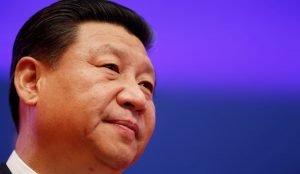Deng Xiaoping’s economic reforms beginning in the late 1970s set off a period of nearly forty years of spectacular Chinese GDP growth, surpassed in history perhaps only by Argentina during the four decades that ended roughly 100 years ago. In that earlier period, even with an interruption that included a sovereign default in 1890 which nearly brought down the English banking system, Argentina transformed itself from a marginal economy at the edge of Latin America into one of the richest in the world.
Referring to Argentina, with its disappointing subsequent history, in an article about the Chinese growth miracle may seem gratuitous, but it should remind us that the expectations generated by even the most spectacular growth miracles have a history of confounding us. This lesson is one best understood in the context of the work of Albert Hirschman, one of the great, and greatly underrated, economists of the last century.
All rapid growth, Hirschman argued, is unbalanced growth. In fact, any period of significant structural change in an economy is likely to generate imbalances. Successful development models necessarily generate deep imbalances, especially because successful policies, by definition, change the conditions under which the policies were originally implemented. As these conditions change, the original policies tend to lose their effectiveness, often to the point of becoming constraints on further growth.
Long-term development success, in other words, is determined not just by the success of a country’s growth strategies but also, and importantly, by the subsequent adjustment period during which the accompanying imbalances are reversed. In the 1960s and 1970s, when Hirschman first developed his economic framework, he was optimistic enough to focus primarily on the creation of successful growth strategies, assuming that the subsequent adjustment process was likely to be relatively straightforward. Over time, however, as the enormous hopes he and many others had placed on Latin American growth gave way to disillusion and frustration, Hirschman became increasingly pessimistic about the long-term prospects for developing countries, in large part because the adjustment process turned out to be far more difficult than he, and everyone else, had anticipated.
In the early 1980s, Hirschman noted that path-dependency had an especially important role in generating the policy distortions that could undermine long-term development. It is hard for policymakers, he said, to abandon successful policies once these policies have clearly achieved their aims. In fact, even after these policies become counterproductive it is common, and indeed almost always the case, that the policies are retained. They therefore continue to generate economic imbalances that are usually expressed in the form of an unsustainable increase in debt. This cycle lasts until the imbalances reach a point where they can seriously threaten economic or financial stability.
Although he is not widely read among China specialists, Hirschman’s concerns have special resonance in China. In March 2007, for example, China’s then-premier Wen Jiabao famously characterized China’s macroeconomic outlook as “unstable, unbalanced, uncoordinated, and unsustainable.” It was not until 2011-12, however, that China began to take the first serious steps towards unwinding the mechanisms that had worsened the very imbalances that Wen identified.
































